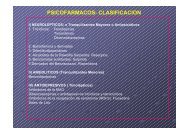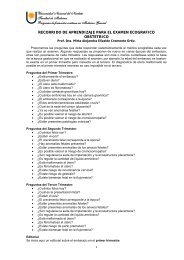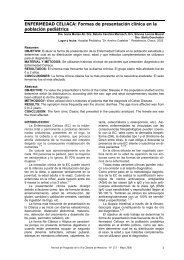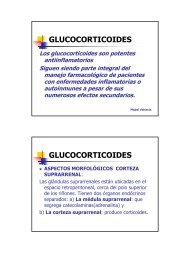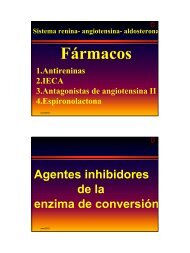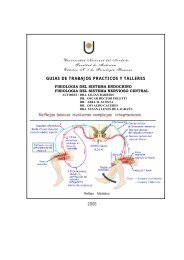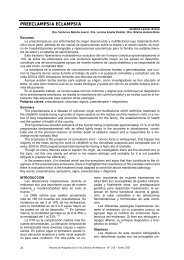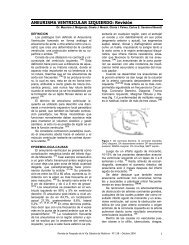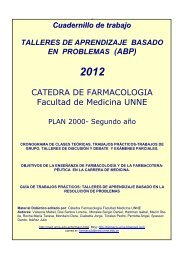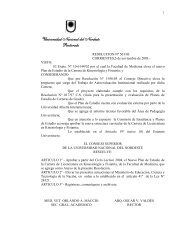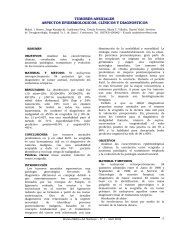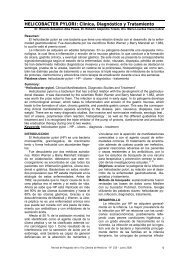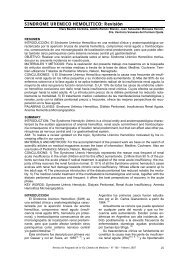MANUAL DE SEMIOLOGIA MEDICA - Facultad de Medicina
MANUAL DE SEMIOLOGIA MEDICA - Facultad de Medicina
MANUAL DE SEMIOLOGIA MEDICA - Facultad de Medicina
You also want an ePaper? Increase the reach of your titles
YUMPU automatically turns print PDFs into web optimized ePapers that Google loves.
Si no logra auscultar un ruido dígalo, es la única forma <strong>de</strong> apren<strong>de</strong>r no tema, diga:<br />
"Yo... no escucho”, eso es ser honesto.<br />
Para una mejor comprensión diagramaremos los ruidos cardíacos:<br />
1 = Primer ruido<br />
2 = Segundo ruido<br />
Espacio 1-2 : Sístole<br />
Espacio 2-1 : Diástole<br />
1 2 1 2<br />
Intente auscultar a un compañero, o a un paciente tratando <strong>de</strong> individualizar los<br />
ruidos y los espacios; correlacione los ruidos con las ondas <strong>de</strong> pulso arterial (ausculte y<br />
tome el pulso simultáneamente).<br />
Los ruidos 1 y 2<br />
Correspon<strong>de</strong>n al sonido<br />
que emiten las válvulas<br />
al cerrarse<br />
PRIMER RUIDO<br />
Correspon<strong>de</strong> al cierre <strong>de</strong> las válvulas auriculventriculares: Mitral y tricúspi<strong>de</strong>. Por lo<br />
tanto, el primer ruido tiene 2 componentes: el mitral y el tricúspi<strong>de</strong>( Fig.”A” )<br />
Cuando los componentes se separan, hablamos <strong>de</strong> <strong>de</strong>sdoblamiento (Fig. " B").<br />
1 2 1 2<br />
(Fig.”A”)<br />
(Fig.”B”)<br />
56



